The wolf spider is a medium-sized spider that hunts on the ground during the day; it chases down its prey and leaps on it, just like a wolf. It frequents gardens and grasslands, as well as a variety of other habitats, and can often be seen sunbathing or running across the ground. The female carries her round egg-sac underneath the back end of her body, attached to the organs that produce silk, called the ‘spinnerets’. She will carry the young on her back for a few days after they hatch.
How to identify:The wolf spider shows various patterns of dark grey, brown and black, and is quite hairy. There are several species of wolf spider, which are very difficult to tell apart.
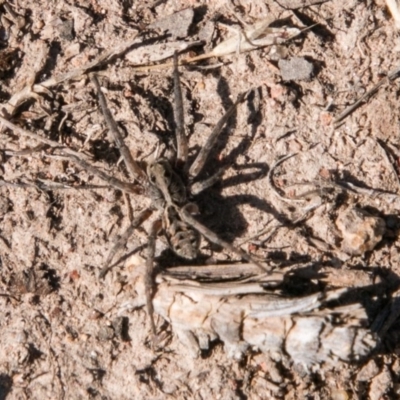
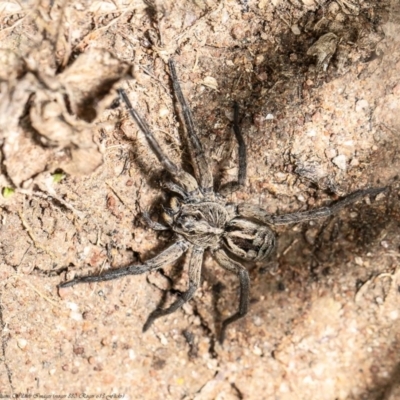
What do wolf spiders look like?
Wolf spiders are often large and hairy. They are usually grey with brown or dark grey markings. Their eyes shine if you spot them under torchlight. They are anywhere between 1.2 to 5 centimetres in size.
Unlike most spiders, you will not find the wolf spider perched in a web laying in wait for its prey. Named for its style of attack, this solitary arachnid is a true hunter. Although they are able to climb and swim, they are primarily ground dwellers. Found in open, grassy areas, under yard debris, lurking in underground tunnels or along stream beds, wolf spiders may lie in wait for insects, other spiders or even small amphibians. Often though, they hunt more actively, chasing down prey at a breakneck speed of approximately two feet per second. If that doesn’t seem fast, consider the distance from the tip of your finger to the nape of your neck.
Tasmanicosa godeffroyi (Garden Wolf Spider)
The characteristic “Union Jack” pattern of radial black and white stripes on the carapace identifies this as a Tasmanicosa species. Tasmanicosa godeffroyi is the only Tasmanicosa species that has been reported in the region by Framenau and Baehr in their 2016 revision of the Tasmanicosa genus. However from the dorsal side it is morphologically indistinguishable from Tasmanicosa leukartii. I am confident that this individual, a female, is T. godeffroyi because its total body length is 23mm. Females of T. leukartii have a max. body length of only 17mm. Note: T. leukartii can also be distinguished from T. godeffroyi by the pale central patch in the otherwise dark abdomen – viewed from the ventral side. I did not however turn this one over to check that!
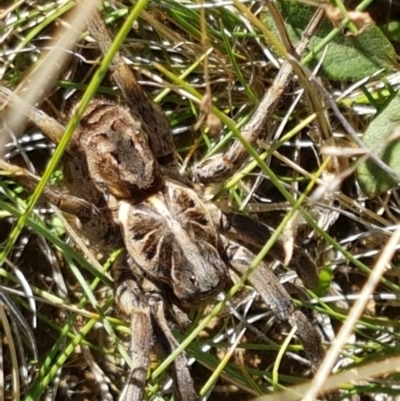
Where are wolf spiders found?
Wolf spiders are found all over the world but there are several species just found in Australia. The Garden Wolf Spider (Tasmanicosa godeffroyi) is the most common wolf spider in Australia and lives in open woodlands and suburban backyards.
The wolf spider is a solitary buddy who enjoys hunting by itself. They live in holes in the lawn but will often roam about looking for their next meal. This buddy does most of its hunting at night, so while you’re asleep, the wolf spider is helping keep the insect numbers down in your garden.
Fast facts:
Wolf spiders get their name from their hunting preference of stalking down their prey much like a wolf does, making them the top predators in your lawn. They will go after crickets, flies, ants and even other spiders.
Many spiders rely on their webs and the vibrations given off by animals to catch their prey. Wolf spiders, however, rely almost entirely on their eyesight. Wolf spiders have eight eyes, four small ones in a row and four large ones above these that give them some of the sharpest eyesight of all spiders.
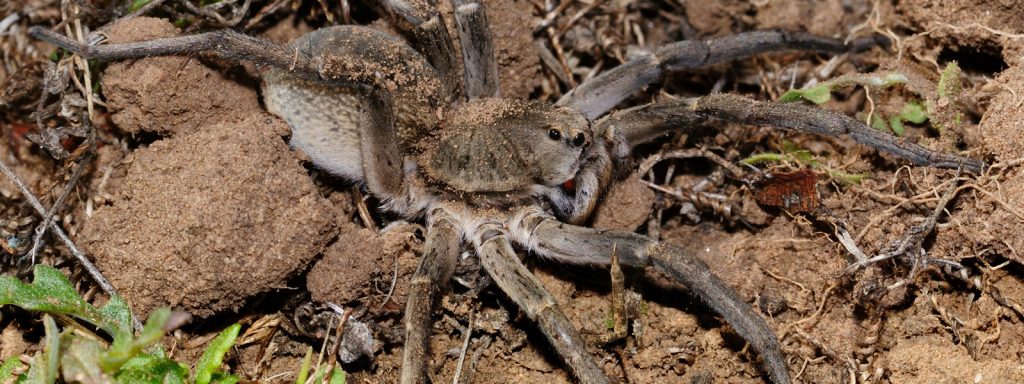
Wolf Spider – the full story
Wolf spiders get their name from their hunting preference of stalking down their prey much like a wolf does, making them the top predators in your lawn. They will go after crickets, flies, ants and even other spiders.
The wolf spider is a solitary buddy who enjoys hunting by itself. They live in holes in the lawn but will often roam about looking for their next meal. This buddy does most of its hunting at night, so while you’re asleep, the wolf spider is helping keep the insect numbers down in your garden.
Wolf spiders are found all over the world but there are several species just found in Australia. The Garden Wolf Spider (Tasmanicosa godeffroyi) is the most common wolf spider in Australia and lives in open woodlands and suburban backyards.
There are several different ways you can see these buddies. At night you can take a torch out to your lawn and follow the light with your eyes. You will see little green reflections shining back at you. These little green dots are spider eyes, and on your lawn you can be confident that they most likely belong to wolf spiders.
Another common time to spot these spiders is when you’re digging in the garden. As they spend a lot of time in their holes in your garden, wolf spiders are prone to being dug up. They may look a little stunned at first but they will soon scurry away into the soil to hide and dig a new hole.
The third most common way to see them might be your least favourite. When winter sets in, mum will often bring her egg sac inside your house to escape the cold. You can gently move her and her egg sac outside without injuring them.
The female wolf spider will diligently carry around her egg sac and even help the babies hatch by moistening the shell with her mouth. Once hatched, the babies will be patiently carried around on the mother’s back until they are old enough to survive alone.
When the babies are ready to leave, they will often send out web-like tendrils that catch in the wind and will carry them off to new locations. This process is called ‘ballooning’
Wolf spiders will generally run away from you and unless provoked, won’t bite. If they do bite, their venom has very little effect on humans.
Did you know?
Many spiders rely on their webs and the vibrations given off by animals to catch their prey. Wolf spiders, however, rely almost entirely on their eyesight. Wolf spiders have eight eyes, four small ones in a row and four large ones above these that give them some of the sharpest eyesight of all spiders.
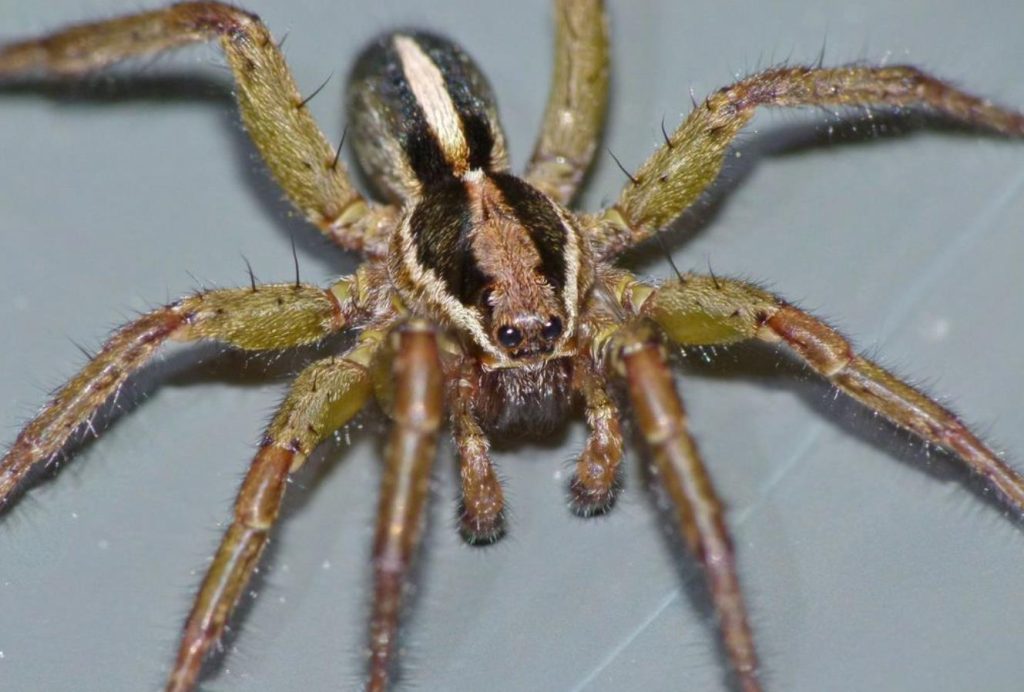
Tip
Don’t reach for the fly-spray when you see these guys wandering in or around your house. Instead, put a container on top of them, slide a piece of paper under, and carry them to your lawn.
There are over 125 different species of wolf spiders in the United States, ranging from ¼” to over an inch in length. Identified by orange-brown coloring with black markings, these hairy spiders have the requisite eight legs, but also an extra set of smaller appendages on the front of their bodies with which to capture prey. The wolf spider is a frightening creature to behold, and although their venom is relatively harmless (unless allergic), their bite can be painful and they will defend themselves if provoked.
Lest you think this fearsome creature is beyond redemption, it does have a softer side when it comes to caring for its young. While most spiders leave an egg sac to develop, wolf spiders carry their eggs in a silken papoose on their abdomen. Nurturing by nature, once the eggs have hatched, the female wolf spider will carry dozens of baby spiders on her back until they are old enough to fend for themselves.
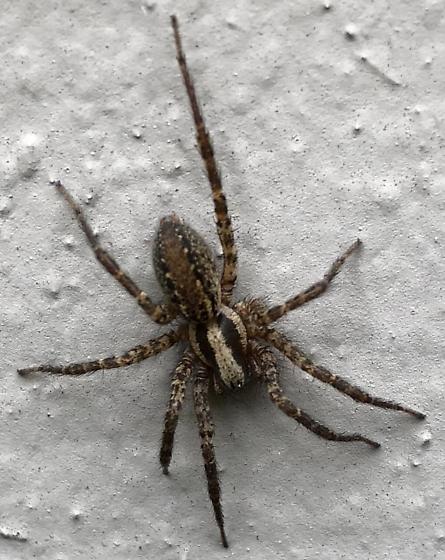
Like other spiders, the wolf spider is a valuable part of the ecosystem, helping to keep insect populations in check with its prodigious appetite. Despite its contributions and the charm of its mothering instincts, most consider this mildly venomous spider an undesirable guest around the garden or occasionally in the home. Because the wolf spider is solitary by nature, addressing the problem one spider at a time may be enough to solve the problem. If, however, wolf spiders have settled in or around your home, additional measures may be necessary.
Remember that the wolf spider is actually one of the good guys. Live and let live, if possible. When it comes to biting spiders though (even relatively harmless ones) most of us draw the line at the front door. To keep wolf spiders from stopping by, start by sealing any gaps around doors, windows or foundations. Clearing out any accumulated leaves or lawn clutter around the house will also limit spider curb appeal.
If wolf spiders have become an unbearable presence in or around the home, treatment with pesticides is an option. Chemical treatments should always be used explicitly as directed or deployed by professionals.
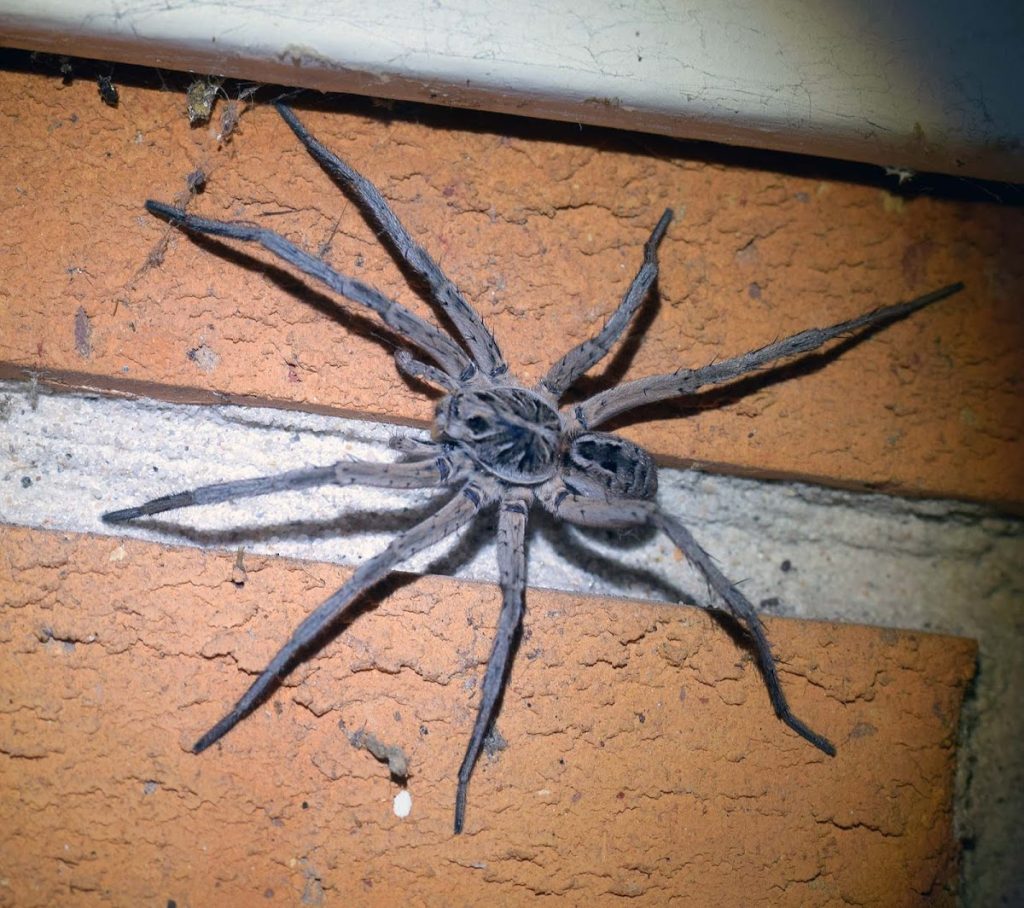
Description:
across the legs 7cm probably 2cm body. Very aggressive initially, calming as time went by. I am not spider expert and this identification is a best guess based on examples
Habitat:
This one has entered my lounge room searching for a mate and seems inclined to sit on the wall above my pillow. Every time he is approached he drops off onto the bed and the scurries out of sight. His vision is excellent and he was watching and reacting from the far side of the apartment.
Introduction
Wolf spiders are robust, agile, fast-moving ground hunters that chase down or ambush prey.
Identification
The Garden Wolf Spider is large and strongly patterned in grey, brown and white with a black underside. They have large eyes with which they locate their prey. Their characteristic eye formation is four large eyes arranged in a square on top of the head with four smaller eyes in a row at the front.
Habitat
Garden Wolf Spiders prefer urban areas, forests and woodlands and heath.
Distribution
Garden Wolf Spiders are found throughout southern Australia.
Other behaviours and adaptations
Most live in leaf litter or in burrows in fairly open ground. Its open burrows are often seen in Sydney gardens. The best time to see wolf spiders is at night when they are searching for prey. Use a torch to spot the greenish yellow reflection from their large eyes.
Life history cycle
Female wolf spiders carry their egg sac behind them, attached to the spinnerets (silk-spinning organs) on the abdomen. When the eggs hatch, the spiderlings hitch a ride on the mother’s back, clinging onto special knobbed hairs.
